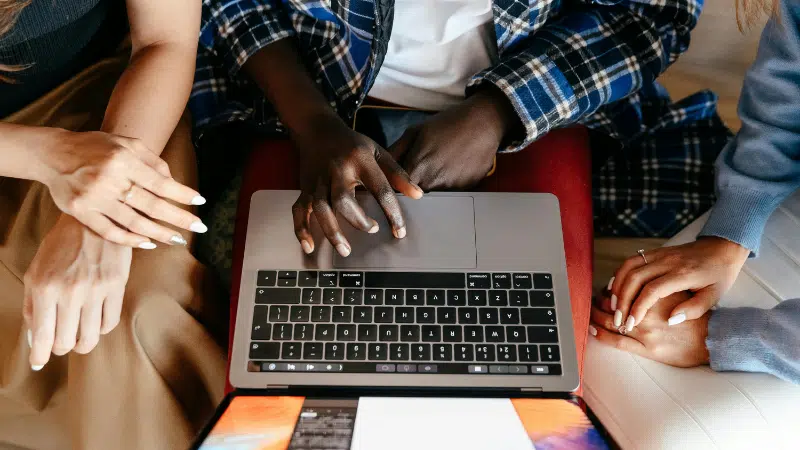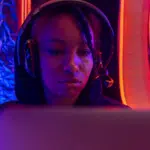When it comes to promoting your music, sometimes it can feel like throwing content into the void, fingers crossed, and hoping for the best. But what if there was a way to take some of the guesswork out of it? That’s where A/B testing comes in. In this post, we’ll break down everything you need to know about A/B testing for musicians, including our favorite tools, ideas to try, and more. Here’s the rundown…
How To Use A/B Testing for Better Music Marketing
What is A/B Testing?
A/B testing is a way to compare two versions of something to see which one performs better. You show Version A to one group of people and Version B to another, then look at the results to see which one gets more engagement, like more clicks, plays, opens, or views. The key is to change one thing at a time so you know exactly what made the difference.
Think of it like running a mini experiment. Instead of guessing what your fans will respond to, A/B testing helps you gather real data to make smarter choices. And in this age of celebrity space journeys and humanoid robots, there’s no reason your marketing efforts should be stuck in the dark ages.
What A/B Testing Looks Like for Artists
Once you understand the basics, it’s easy to see places where A/B testing can help you fine-tune your marketing. You’re probably even already doing it in small ways, like posting two versions of a clip and seeing which one gets more love. But going even deeper, things like Instagram or TikTok Ads, Email Campaigns, YouTube Thumbnails, Social Media Hooks, and Link in Bio Pages can all be A/B tested.
The common thread here? Make sure to keep everything else the same and change just one element at a time. That’s how you get clear, useful results. Any good scientist will tell you, the control group makes or breaks the study.
Which Tools Should You Use?
You don’t need fancy tech or a huge budget to start A/B testing. There are tons of tools out there, many of which are free or super low-cost, that can help you test different versions of your content and track what works. Some of the more artist-friendly ones include:
📲 Meta Ads Manager (Facebook/Instagram): If you’re running ads, Meta lets you set up split tests for different visuals, captions, video lengths, or headlines. With it, you can test how each version performs and automatically allocate more budget to the better one.
📧 Email Platforms (Mailchimp, etc.): Most email marketing platforms let you A/B test subject lines, send times, and even adjust content layouts. Start small by testing which subject line gets more opens or which call-to-action gets more clicks. (Note: We use Mailchimp here to help us A/B test our newsletter. And it helps immensely.)
🧑💻 Link in Bio Tools (ToneDen, Hypeddit): These platforms let you track which links get the most clicks. With these, try swapping button order, headline text, or background color to see what gets more engagement.
🎬 YouTube Studio & TikTok Analytics: You don’t need to run ads to test performance. Post two versions of a TikTok with slightly different hooks, or swap out a YouTube thumbnail. Your built-in analytics will show you which one pulls better numbers.
🔊 Smart Link Landing Pages: If you’re promoting a release, use platforms like Feature.fm or Linkfire to create smart links with built-in tracking. Some even let you run A/B tests on page design and layout.
The key is to use tools that already fit into your existing workflow. No need to overcomplicate it! These tools should be helping you, not stressing you out. Most platforms you’re already using have some version of testing or performance analytics baked in, giving you no excuse for not at least trying them.
And if you’re looking to get even more precise with your testing, this free calculator helps you figure out how statistically significant your results really are.
Need some ideas? Try these out…
A/B testing doesn’t have to be too serious or complicated. It’s just about being curious enough to try different ideas. Just think, what is actually getting your audience to stop scrolling, click, or listen? Even small tweaks can make a big difference when it comes to promoting music.
Let’s say you need to tease a new single.
- Post two versions of a preview clip: one that’s a 15-second highlight of the hook, and another that’s a 30-second slow build into the chorus. Which one gets more saves or shares?
If you’re posting on TikTok or Instagram Reels, experiment with the opening line.
- In one version, start by asking, “What if Drake produced a reggaetón track?”
- In the other, hit them right away with the beat drop.
Want to take it a step further? Use Instagram’s new Trials feature on Reels to run built-in A/B tests directly in the app. It lets you post two versions of the same Reel to see which one performs better.
Captions and ad copy are another place to experiment. If you’re running an ad for your new EP, test two approaches.
- One might be a funny, self-aware line like “Another sad indie project dropping at midnight,”
- The other goes the emotional route: “I poured my entire heart into this EP. I hope it finds you when you need it most.”
You’ll quickly see what kind of tone your audience is more likely to click on or share.
Email marketing? Also fair game.
- If you’re announcing tour dates, test subject lines like “Guess who’s going on tour 👀”
- On the other hand, try something more straightforward like “Just announced: [Your Name] Tour 2025.”
Most email tools will send both to a small sample, then roll out the winner automatically.
Don’t forget about artwork and visuals! Run two versions of your ad:
- One featuring moody, cinematic cover art and another using a bright, bold graphic with your face front and center.
- Or try different Spotify Canvas visuals, looped performance footage vs. animated lyrics. to see which one keeps listeners on your track longer.
And when it comes to links, your call-to-action can shape how people respond. “Stream the full track” might appeal to diehard fans, while “Watch the official video” could perform better with casual listeners. Testing both helps you know for sure.
The key is to keep your variables controlled. Only test one thing at a time, and stay consistent with the rest. These little experiments can lead to big wins, especially when you’re doing most of the marketing yourself.
——
📚 Feel your brain…
Debunking Common Myths About Artificial Streaming
Everything You Need To Know About Spotify’s Campaign Kit
Top Music Analytics Tools for Independent Artists
How to Influence Algorithms & Leverage DSP Tools to Grow Your Audience
——
What now?
So, you’ve run your tests… now what?
This is where things get interesting. Start by looking at the data that matters most to your goal. Were you trying to get more saves on Spotify? Get more video views? More email opens? Focus on the metric that lines up with what you were hoping to achieve.
Now, let’s say your 15-second video preview got way more shares than the 30-second one. That’s a clear sign your audience prefers something quicker, more direct, so lean into that format next time. Or maybe your emotional ad copy flopped, but the funny one got tons of clicks. That doesn’t mean you should never get serious again, but it does tell you what kind of tone works best in certain contexts.
The key is not to overanalyze it. One test won’t tell you everything, but over time, patterns will start to show. Then, you can use those patterns to guide your creative choices. Keep what works, drop what doesn’t, and keep experimenting. And don’t be afraid to be surprised by the outcome! Sometimes the version you thought would winends up performing like shit. That’s the whole point of testing! It replaces guesswork with real insight.
Common Mistakes to Avoid
Some of the biggest mistakes artists make when it comes to A/B testing include:
- Testing too many things at once. Keep it simple by changing just one element per test. Otherwise, you won’t know which change made the difference.
- Running tests with too small an audience. If your sample size is too tiny, the results may not be as reliable. Give your test enough time and reach to gather some meaningful data.
- Switching things up too quickly. Don’t jump to conclusions after just a few hours or even a few days. Let your test run long enough to get a clear picture.
- Ignoring your goals. Always tie your tests to a specific goal, whether it’s more clicks, streams, or shares, so you know what to measure.
Every new release, campaign, or major content push is a chance to learn something new. Just remember: don’t test things for the sake of testing. Your time is valuable! Pick something specific to improve, run your test, learn from it, and then keep it movin’.
To wrap things up…
To summarize everything we’ve talked about here, here’s a quick checklist to keep handy whenever you’re ready to start your experiments:
- Pick one goal (e.g., more video views)
- Choose one variable to test (e.g., video hook)
- Use a platform that tracks results (e.g., TikTok, Meta)
- Run both versions to similar audiences
- Wait long enough to gather meaningful data
- Analyze results & apply what you learned!
A/B testing may sound like some big, technical, intimidating thing, but all it is is experimenting and learning what clicks with your fans. It takes the guesswork out of promoting your music and gives you real data to prove what’s working and what isn’t. Just start small, pick one thing to test, and keep your goals in mind. Over time, those little wins add up, and before you know it, you’ll be naturally making smarter marketing moves that get your music heard by more people. Just watch closely at how your audience responds to certain vibes, then let them guide the way.
When you combine the power of the fans AND the magic of data, that’s where the party starts. Real results are driven by REAL stats, not guesswork. The future is now! Let your marketing reflect that. 🤖🦾
Good luck!



